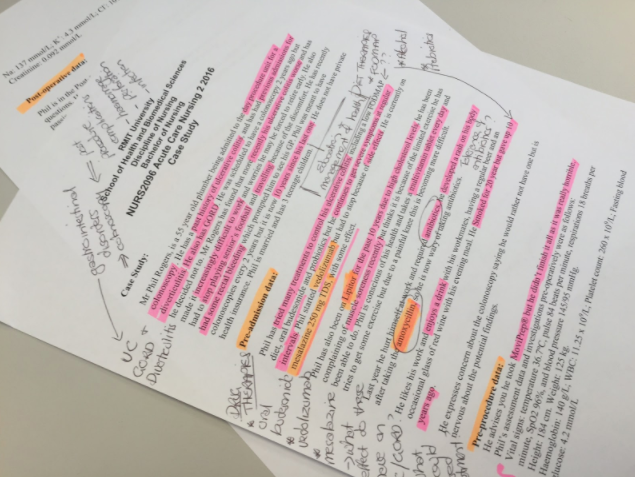Read the case
The next step is to read the case to identify what the issues are and try to understand how, or why, they might have occurred.

A proper analysis requires thorough reading more than once.
The three reading strategies to use are:
- Skimming: To gain a general idea of the content and structure of the case
- Scanning: To pick up important key words, linking words, names and numbers (including dates)
- Deep reading: Slow and careful reading with a critical (questioning) approach
Step 1: Skimming and scanning
Do not stop to make notes. The purpose is to understand the larger concepts, overall structure and scan for keywords, names and dates. When you have finished, ask yourself the following questions:
- What is the case about?
- What issues can I see now?
- Does anything immediately connect to my course notes?
Step 2: Detailed reading
Re-read the case again, more slowly and carefully, for a deeper understanding. Some questions you could ask are:
- What critical events are important? When and why did they happen?
- Who are the people involved and who is responsible?
- What are the key problems? What evidence from the case shows this?
- What are the constraints or obstacles to potential solutions?
- What do I need to research?
For more information, see the Reading skills resources.
Step 3: Annotation/note-taking
Now, begin to annotate the case and continue to ask yourself questions as you read.
Highlight, underline and circle text, and add names, labels and comments to:
- identify important points and supporting points (examples, reasons, statistics)
- draw connections between ideas
- mark important definitions and terminology
- identify any points that need clarification
See the examples below.
In nursing, you are asked to focus on the presentation and management of an individual patient.
You are likely to be asked specific questions concerning their condition, symptoms, therapies and procedures, and strategies for management and treatment.
In the example below you are asked to:
Review the presentation and management of Mr Rogers ensuring you address the following:
- Identify the evidence for the management of ulcerative colitis in relation to diet and drug therapies.
- Discuss the potential post procedure complications you would need to monitor Mr Rogers for in the immediate recovery period.
- Discuss the evidence for the management of GORD.

For more information, see the Note-taking skills tutorials.

